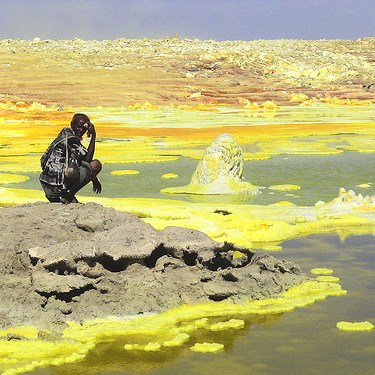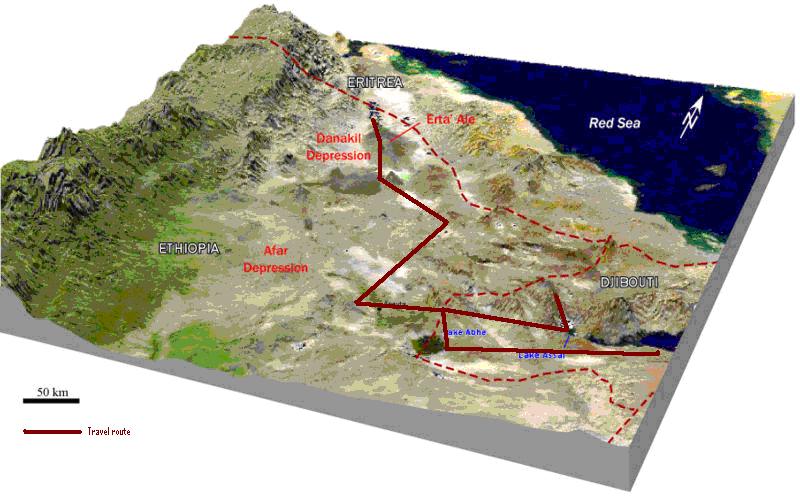
The Danakil Depression is a geological depression in the Horn of Africa that includes three areas: the Afar Triple Junction; part of the Great Rift Valley where it overlaps Eritrea; and, the Afar Region of Ethiopia and Djibouti. About 1200 km² (463 sq mi) of the Danakil is covered by salt, and salt mining is a major source of income for many of the area’s local tribes. But it is not salt that has attracted the attention of the international mining community – it is potash.
The Dallol Desert is the lowest point within the greater Danakil Depression and the hottest place in the entire world at 100 meters below sea level. Potash was discovered there many years ago and production began in 1918 after a railway was completed from the port of Mersa Fatma in Eritrea to an area 28 km outside of Dallol. Potash production ended after World War I when large-scale supplies from Germany, USA, and USSR came to market. Activity in the region sat dormant until just a few years ago when a number of licenses were granted by both Etiopia and Eritrea governments.
In 2007 one of India’s largest mining companies Sainik Coal Mining was awarded a mining license to begin potash extraction in the Danakil Depression – the largest project in the region (estimated at 160 million tonnes). Sainik plans to invest $1.1 billion in the project.
Then on July 18, 2008 Bloomberg reported that the Ethiopia government granted a 17,000 square kilometre permit to BHP Billiton. In the same report, the Mines Ministry also confirmed that three Canadian companies were granted potash exploration licenses in the area.
In neighbouring Eritrea, South Boulder Mines, a company listed on the Australian Stock Exchange (ASX: STB), announced in July, 2009 that it was granted the Colluli Potash Project exploration licence by the Eritrean Ministry of Energy and Mines. Then it became more interesting when it was reported in March, 2010 that China Investment Corp and their $300 billion Sovereign Wealth Fund was looking at Allana Potash (TSXV: AAA) and their Dallol potash project.
And it’s not cooling down yet, yesterday Ethiopian Potash (TSXV: FED) emerged as the latest entrant on the scene and staked its claim on the area with the reverse takeover of G & B Central African Resources. Shares of Ethiopian Potash hit the market with a fervour trading seven million shares closing at $0.75 up nearly $0.60 on the day.
It is clear that the Horn of Africa is open for business. Gebre Egziabher the director of mineral operations for Ethiopia’s Mines Ministry recently stated, “The sector has seen a dramatic change, seven years ago, the West didn’t know about our mineral resources.” Ethiopia’s government is aiming to license 50 mineral-exploration projects every year and more than double exports from the industry to $1 billion in five years.




 Follow us on Twitter
Follow us on Twitter Become our facebook fan
Become our facebook fan










Comments are closed.